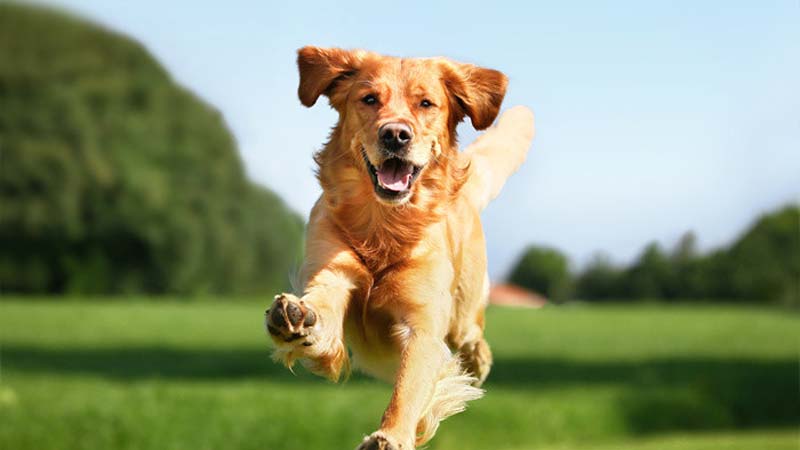- Size
- Smallest
- Small
- Small to Medium
- Medium
- Large
- Giant
- Characteristics
- Smartest
- Hypoallergenic
- Fluffy
- Best Guard
- Best Family
- Best for Kids
- Low Shedding
- Healthiest
- Police Dogs
- Most Calm
- Quietest
- Color
- White
- Black
- Grey
- Brown
- Blue
- Red
- Coat
- Hairless
- Short
- Long
- Origin
- Japan
- China
- Australia
- Germany
- Italy
- United States
- France
- Group
- Hound
- Terrier
- Herding
- Toy
- Working
- Sporting
Dog's Chasing Instinct: Safeguarding and Training for Safety

The exhilaration in a dog's eyes as it takes off after a fleeting squirrel or a passing cyclist speaks volumes about their inherent drive to chase. This instinct is deeply embedded in their DNA, tracing back to their roots as hunters and predators. However, what might seem like a harmless pursuit can quickly turn into a perilous situation if left unchecked. Understanding and managing your dog's chasing behavior is pivotal for their safety and the safety of those around them.
Unveiling the Chasing Instinct
Dogs, being the descendants of hunters, possess an instinctual urge to pursue moving objects. Whether it's a fluttering leaf or a swiftly passing vehicle, the impulse to chase is instinctive, stemming from their innate predatory nature. This behavior isn't indicative of disobedience but rather an expression of their genetic makeup.
Risks and Potential Dangers
Despite the seemingly innocent nature of a dog's chase, the risks associated with it are substantial. Chasing after cars, cyclists, or even pedestrians poses grave dangers, not just to the dog but also to others in their vicinity. The unpredictability of these pursuits amplifies the risks, potentially leading to accidents, injuries, or even fatal outcomes.
Mitigating Risks: Proactive Measures for Safety
While completely eradicating a dog's chasing instinct might be implausible, there are effective steps that responsible pet owners can take to prevent disaster:
Leash and Containment: Maintaining control over your dog by using a leash or securing them within a fenced area is paramount. Direct supervision indoors is equally crucial to prevent impromptu chases.
Recall Training: Teaching your dog a reliable recall command, such as "come," through consistent training is invaluable. This command should be practiced in various settings and distractions to ensure reliability.
Diverting Attention: Equip yourself with tools like a dog whistle or noisemaker to divert your dog's attention away from potential triggers that might ignite their chasing instinct.
Vigilance and Awareness: Stay alert and observant of potential triggers in your surroundings. Being proactive in identifying situations that might stimulate your dog's chase response allows for timely intervention.
Training for Focus and Control
Though the chase instinct might persist, training your dog to prioritize your commands over the impulse to chase is achievable through:
Positive Reinforcement: Reward your dog generously for obeying recall commands, particularly in situations where the urge to chase is intense. Consistent rewards with treats, praise, or play will reinforce the desired behavior.
Consistent Practice: Regular training sessions focusing on recall commands are crucial. Consistency in reinforcing these commands in various scenarios is key to redirecting your dog's attention.
Gradual Exposure: Introduce your dog gradually to triggering stimuli in controlled settings. This exposure allows for reinforcing training while minimizing the risk of an uncontrolled chase.
Professional Guidance: Seek advice from certified dog trainers or behaviorists. They can provide tailored strategies and techniques for effectively managing chasing behavior.
Achieving Success through Dedication
Effectively managing your dog's chasing instinct demands dedication and persistent effort. By consistently implementing preventive measures, integrating focused training sessions, and staying vigilant, the risks associated with chasing behavior can be significantly mitigated.
Every dog is unique, and the effectiveness of these strategies may vary. Patience, empathy, and a commitment to your dog's well-being are vital components in successfully managing their chasing instincts.
In Conclusion
Understanding and managing a dog's chasing behavior is an integral part of responsible pet ownership. While erasing their chasing instinct entirely might be impractical, proactive measures, consistent training, and a keen awareness of potential triggers can substantially reduce the risks associated with this behavior.
Prioritizing your dog's safety while fostering harmony in their interactions with the world allows for a fulfilling companionship, keeping both your furry friend and others safe from potential hazards.
You May Also Like
 Help & AdvicePawsitive Health Habits: A Guide to Keeping Your Dog in Top Shape
Help & AdvicePawsitive Health Habits: A Guide to Keeping Your Dog in Top Shape Useful AccessoriesThe Pros and Cons of Using a Halo Collar for Dog Training
Useful AccessoriesThe Pros and Cons of Using a Halo Collar for Dog Training Dog AttacksWhen Dogs Attack: Holding Pet Owners Accountable for Personal Injuries
Dog AttacksWhen Dogs Attack: Holding Pet Owners Accountable for Personal Injuries Useful Accessories9 Useful Accessories for Your Dog
Useful Accessories9 Useful Accessories for Your Dog Help & Advice10 Tips for New Dog Owners
Help & Advice10 Tips for New Dog Owners Help & AdviceThese 10 Dog Breeds Novice The Best Not To Keep!
Help & AdviceThese 10 Dog Breeds Novice The Best Not To Keep!